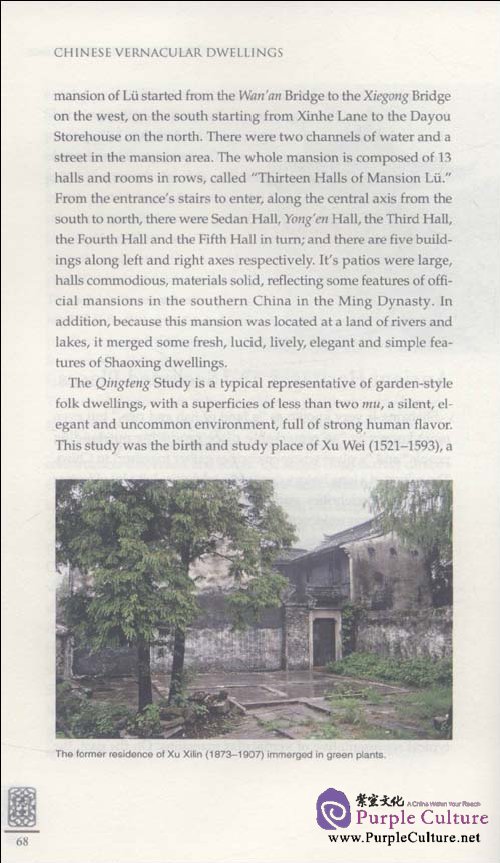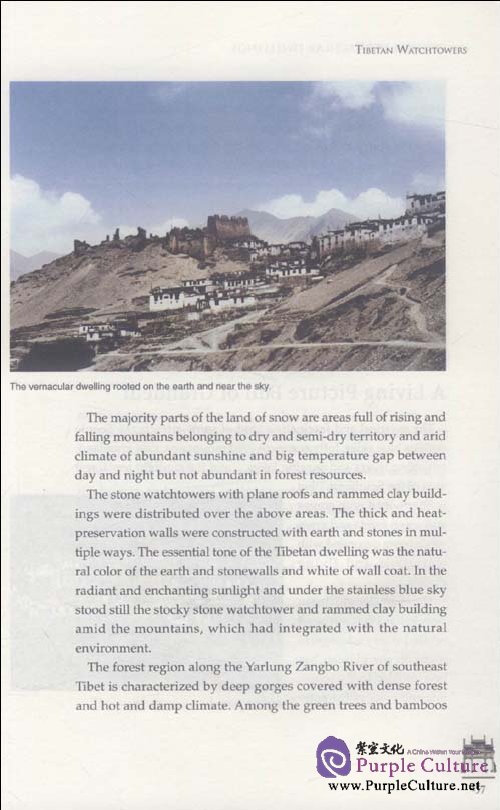Details
China has a vast territory and an extremely long history with the
natural and cultural environment differing from region to region.
Therefore the diversification of Chinese vernacular dwelling is rarely
seen in the architectural history of the world. This book has chosen some
settlements which are representative and widely spread to introduce
basing on the interaction of theliving customs, action characteristics
and the space mode of people who inhabit the traditional vernacular
dwellings. Chinese vernacular dwelling is various and colorful. Both the
profound and steady northern vernacular dwellings and the elegant and
pretty southernvernacular dwellings contain the philosophy that "human
beings should be inharmony with nature" and the ethic views such as
superiority and inferiority in social life, the order of elders and the
young, the different treatment towardsmen and women, the differentiation
between people in and out of a clan. This book has described the origin,
architectural characteristics and the passing-down value of the Chinese
traditional vernacular dwellings in a popular waybut with the
professional accuracy. This book is dotted with related
historicallegends and folklores. Thus, a vivid scroll of Chinese
vernacular dwelling wasclearly drawn.
About AuthorShan
Deqi, born in 1937 in Anhui Province,graduated from the Civil
Engineering and Archi-tecture Department of Tsinghua University in1960
and majored in architecture. He was for-merly Director of "the Teaching
and Research Section for Architectural Design" of the Architec-ture
Department of Tsinghua University, and the Vice-President of the School
of Architecture,Tsinghua University. At present, he is the Pro-fessor at
the School of Architecture of Tsinghua University as well as tutor of
doctoral graduate students, Member of the Academic Committee,and Vice
Director of the Academic Degree Com-mittee. Shan Deqi has published
monographs including Illustrations of Chinese Traditional
Vernacular Dwelling, etc.
Sample Pages Preview


When
the people walk in traditional settlements of dwellings, theysee white
walls, black tiles, dark gray stone-bridges, dark brownpartition-boards
and "the culture of three black things" proper inShaoxing (boats with
black awning on the rivers, black hats on thepeople's head, and black
dried vegetables sending forth aroma inmany houses) and feel a silent
and elegant flavor of the south ofthe lower reaches of the Yangtze
River. "The culture of three blackthings" and black, white and gray
colors exerted a subtle influenceon local aesthetic conception, which
gradually turned implicative,wide, thick and profound; the residents'
heart seems purified much,far from flippancy, not seeking fame and
wealth but keeping theirideals. In full-bodied ambient of a land of
rivers and lakes, fellowtownsmen row boats drinking yellow wines,
looking so low-pressured. It seems that any bagatelle in life has been
cast to thewinds.

